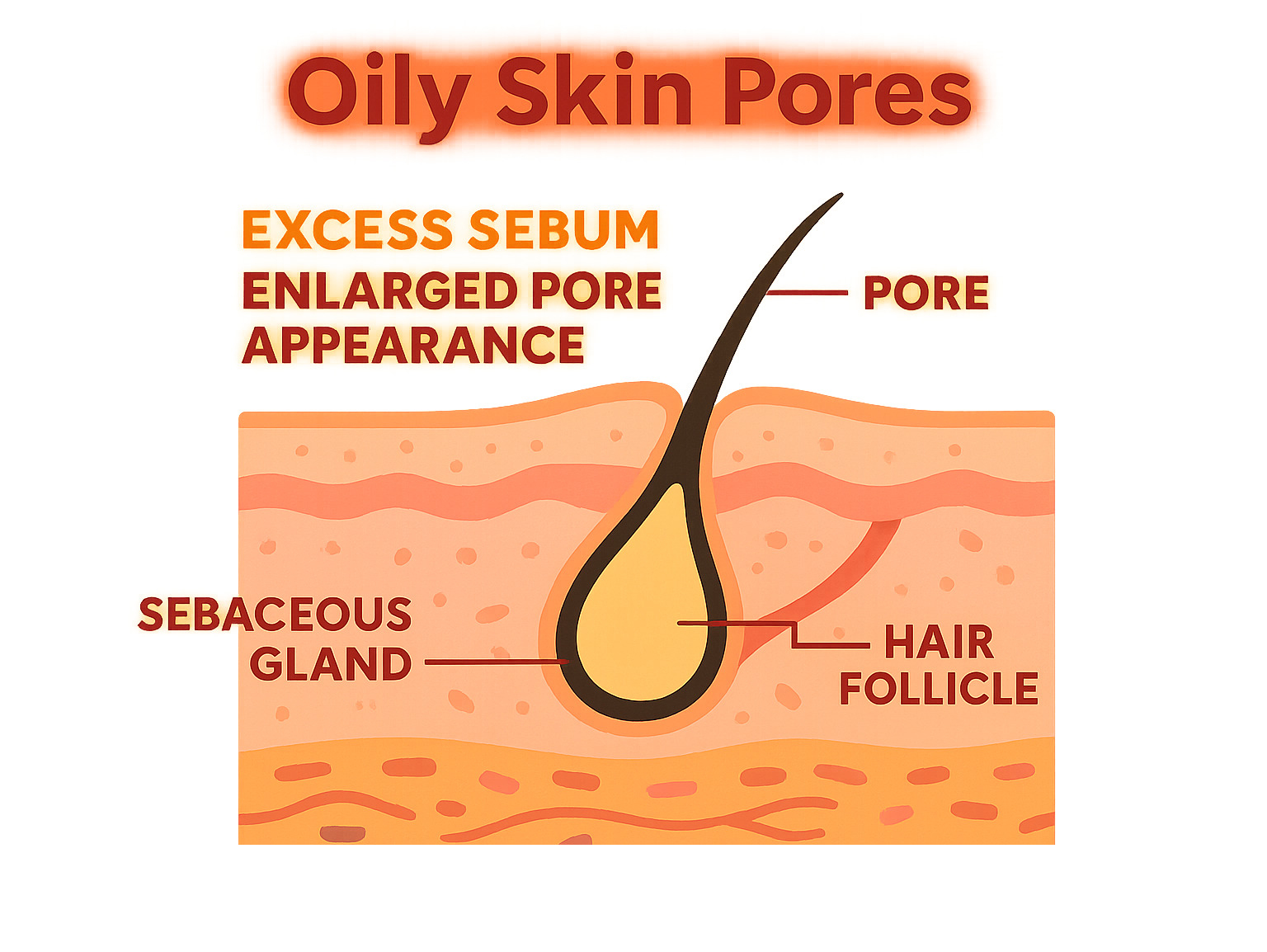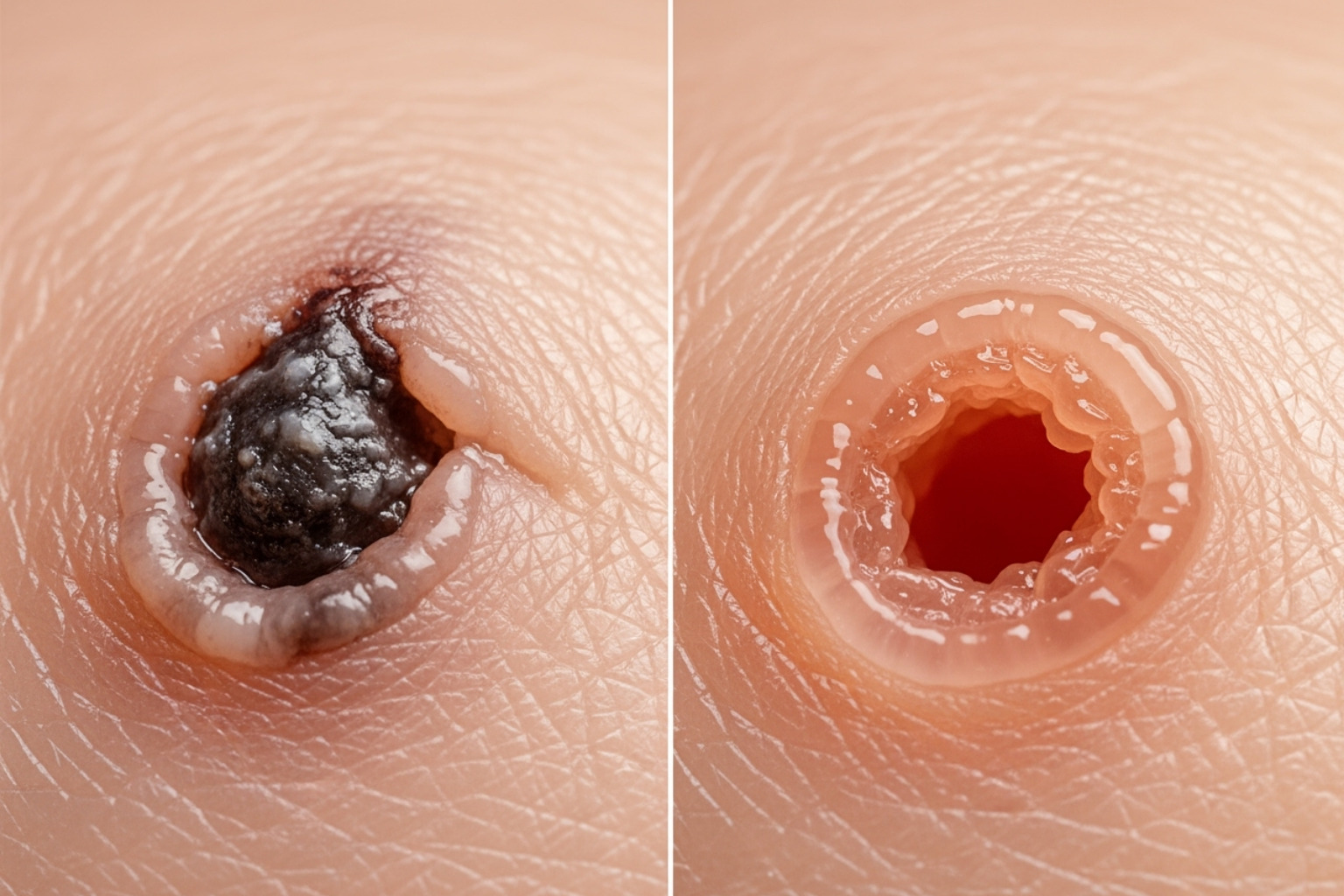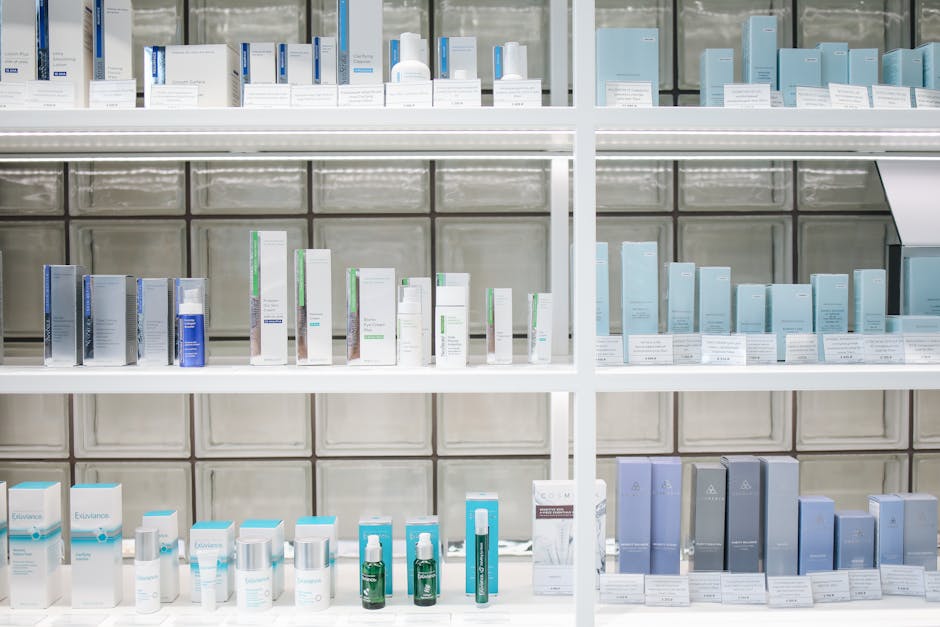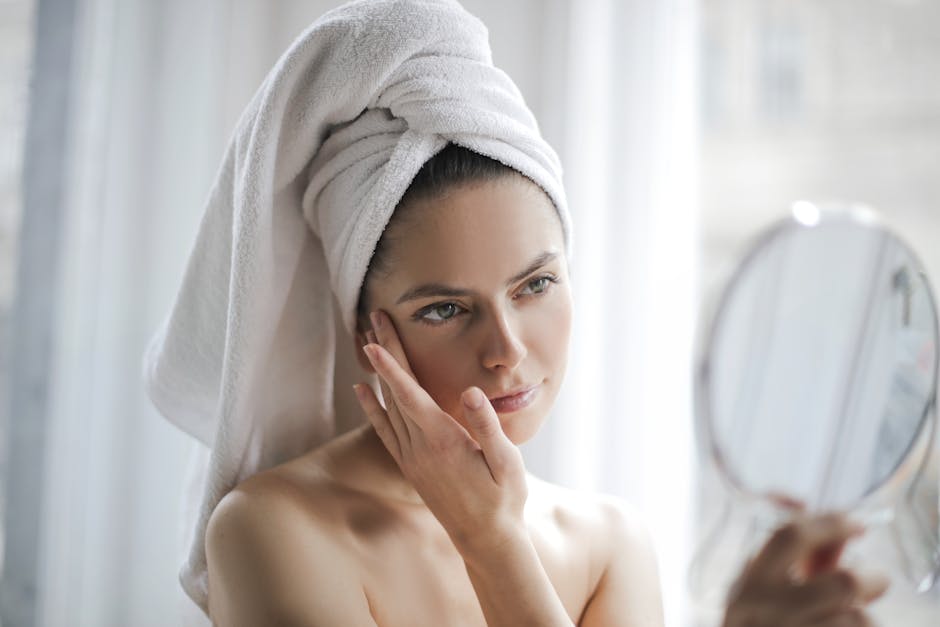Why Understanding Oily Skin Pores Matters for Your Skincare Journey
Oily skin pores affect millions, yet they are often misunderstood. If you have ever wished you could minimize enlarged pores, understanding their nature is the first step.
Quick Answer for Oily Skin Pores:
- What they are: Enlarged openings where sebaceous glands produce excess oil (sebum)
- Main causes: Genetics, hormones, sun damage, and clogged debris
- Key difference: Clogged pores contain buildup, while enlarged pores are simply more visible due to size
- Can be managed: Through proper cleansing, exfoliation, and targeted ingredients like niacinamide and salicylic acid
- Cannot be permanently shrunk: But their appearance can be significantly minimized with consistent care
While pore size is largely determined by genetics, you are not powerless. Clogged pores are a leading cause of acne, affecting about 50 million people annually. The right skincare approach can dramatically improve the appearance and feel of your pores.
Oily skin occurs when sebaceous glands produce too much sebum. When this excess oil mixes with dead skin cells and debris, it can stretch pores, making them appear larger.
Understanding the difference between enlarged pores and clogged pores is crucial for choosing the right treatment. You cannot change your genetics, but you can influence how your pores function and appear through smart, science backed skincare.

Understanding the Root Causes of Oily Skin and Enlarged Pores
Understanding the science behind oily skin pores is a game changer for your skincare routine. Knowing the root causes makes finding an effective solution much clearer.
What Causes Oily Skin and Enlarged Pores?
Your pores are tiny openings connected to sebaceous glands, which produce sebum, the natural oil that keeps skin healthy. When these glands go into overdrive, excess sebum mixes with dead skin cells and debris, stretching pore walls and making them more noticeable.
- Genetics play the biggest role; if your parents had prominent pores, you likely inherited that trait.
- Hormonal fluctuations during puberty, pregnancy, or your monthly cycle can kick oil production into high gear.
- Aging causes skin to lose elasticity, so pores that were once held tight start to look more prominent.
- Sun damage breaks down collagen and elastin, the proteins that keep skin firm. As these support structures weaken, pores become more visible.
- Hair follicle size also matters, as larger follicles naturally have larger pores.
Clogged Pores vs. Enlarged Pores: What’s the Difference?
Clogged pores and enlarged pores are not the same, though they often go hand in hand.
-
Clogged pores occur when dead skin cells, oil, and dirt get trapped, creating a blockage. This can lead to comedones. Blackheads are open comedones where the trapped mixture oxidizes and turns dark. Whiteheads are closed comedones, appearing as small bumps. If bacteria get involved, pimples and cysts can form.
-
Enlarged pores are simply pores that appear larger than average, and they can exist without any blockage. However, chronic clogging can stretch the pore walls over time, contributing to an enlarged appearance.

Common Symptoms and Long-Term Effects
Signs of oily skin pores are usually obvious. Symptoms include a persistent visible shine (especially in the T zone), a greasy feel, frequent breakouts, and constant blackheads. Your pores on the nose, forehead, and chin may look noticeably larger.
If left unmanaged, long term effects can include post inflammatory hyperpigmentation (dark spots), skin texture irregularities, and, in severe cases of cystic acne, permanent scarring. Fortunately, consistent care can manage these symptoms and prevent most long term complications.
Your Essential Skincare Routine for Oily Skin Pores
Managing oily skin pores is about balance, not eliminating oil. A consistent routine custom to your skin needs is the secret to success. Here is how to build a routine that works with your skin, not against it.

Step 1: Cleanse and Prepare
Gentle cleansing is foundational. Your goal is to remove the daily buildup without stripping your skin, which can trigger more oil production. Wash your face twice daily with a mild, pH balanced, water based cleanser. Gel or foaming formulas work well for oily skin. Always choose non-comedogenic products, meaning they will not clog your pores. Use warm (not hot) water and pat your skin dry.
Step 2: Exfoliate and Decongest
Exfoliation is key for oily skin pores, as it clears away the dead skin cells that cause blockages. Chemical exfoliants are generally gentler and more effective than harsh physical scrubs.
- Salicylic acid (BHA) is oil-soluble, allowing it to penetrate deep into pores to dissolve the mix of sebum and dead skin cells. It is excellent for blackheads and whiteheads.
- Glycolic acid (AHA) works on the skin surface to shed dead cells and smooth texture.
- Clay masks, used once or twice a week, absorb excess oil and draw out impurities.
Exfoliation Dos and Donts:
- Do exfoliate one to two times per week.
- Do choose BHA for blackheads and whiteheads.
- Do patch test new products.
- Do not over-exfoliate, as this can cause irritation.
- Do not use harsh physical scrubs.
- Do not exfoliate on irritated skin.
Step 3: Treat with Key Ingredients
This step uses targeted ingredients to address oily skin pores.
- Niacinamide (Vitamin B3) helps control oil production, brightens skin, and supports the skin barrier.
- Retinol and retinoids (Vitamin A derivatives) accelerate cell turnover, preventing clogged pores and improving skin firmness over time. Start with a low concentration to allow your skin to adjust.
- Zinc helps regulate sebum and has anti-inflammatory properties, making it useful for breakouts.
- Antioxidants like Vitamin C and E protect skin from environmental damage.
When choosing products, consider vegan skincare options that align with clean beauty principles.
Step 4: Hydrate and Moisturize
Skipping moisturizer can make oily skin worse. When skin becomes dehydrated, it compensates by producing even more oil. Choose an oil free, non-comedogenic moisturizer to provide hydration without adding grease. Look for lightweight, water based formulas with humectants like hyaluronic acid and glycerin, which draw moisture into the skin.
The Non-Negotiable Final Step: Sun Protection
Sun protection is the most critical step for managing oily skin pores. Sun damage destroys collagen and elastin, the proteins that keep skin firm. When these structures weaken, pores appear larger.

Use a broad spectrum sunscreen with SPF 30 or higher every day. For oily skin, choose oil free sunscreen formulas. Mineral sunscreens with zinc oxide or titanium dioxide can also provide a mattifying effect. This daily step prevents premature aging and protects against skin cancer.
The Impact of Lifestyle on Your Skin
Our daily habits have a powerful impact on our skin. When managing oily skin pores, what you eat, how you sleep, and your stress levels matter. An oily T zone after an indulgent weekend is not your imagination. It is your lifestyle speaking through your skin.
How Diet and Hydration Affect Oily Skin Pores
The link between diet and skin is significant. While you cannot change your genetics, you can influence your skin through food choices.
High glycemic foods (sugary snacks, white bread) can cause blood sugar spikes that may trigger increased oil production. Similarly, some studies suggest dairy products are linked to acne flare ups in some people. A 2019 study of 84 Korean adults found that higher consumption of meat, dairy, and alcohol was associated with higher sebum production.
Conversely, antioxidant rich foods like berries and leafy greens help your skin fight inflammation. Proper water intake is also crucial. While it will not shrink pores, hydration plumps up skin cells, making the skin appear smoother and pores less obvious. Aim for at least eight glasses of water daily.
Managing Stress and Its Effect on Your Skin
Stress can literally show up on your face. When you are overwhelmed, your body releases cortisol, a hormone that signals your sebaceous glands to produce more oil. This can lead to more clogged pores and breakouts.
Stress also promotes inflammation, which can worsen skin conditions and slow healing. You can break this cycle through effective stress management.
- Regular exercise boosts blood flow to the skin and is a powerful stress buster.
- Quality sleep (7-9 hours) is when your skin repairs and regenerates.
- Mindfulness and meditation can help lower cortisol levels.
Simple self care rituals, like applying a face mask or maintaining a consistent skincare routine, can also provide mental and physical benefits. Taking care of your overall well being gives your skin its best chance to thrive.
Debunking Myths and Knowing When to See a Dermatologist
When it comes to oily skin pores, a lot of advice is unhelpful or even harmful. Let us separate fact from fiction and clarify when it is time to see a professional.
Common Myths About Treating Oily Skin Pores
Many popular beliefs about treating pores are actually working against us.
-
Myth: You can shrink pores permanently. The truth is that pore size is genetic and cannot be permanently changed. However, their appearance can be minimized dramatically with consistent skincare that keeps them clean and improves skin firmness.
-
Myth: Oily skin does not need moisturizer. This is false. Dehydrated skin often overcompensates by producing more oil. All skin types need hydration; for oily skin pores, the key is a lightweight, oil free, non-comedogenic moisturizer.
-
Myth: Harsh scrubbing is best. Aggressive scrubbing can irritate the skin, damage its protective barrier, and trigger even more oil production as the skin tries to heal itself. Gentle exfoliation is far more effective.
-
Myth: Toners close pores. Pores do not open and close. The tight feeling from old, alcohol heavy toners was due to the skin being stripped of its natural oils. Modern toners can be beneficial, but they do not change pore size.
When to Seek Professional Help
While a good at home routine is often sufficient, sometimes you need an expert. A dermatologist can provide professional guidance to help you reach your goals.
See a professional for:
- Persistent acne that does not respond to over the counter treatments after several months.
- Painful cysts and nodules, which can lead to permanent scarring if not treated properly.
- No improvement in your skin despite a consistent, appropriate skincare routine.
A dermatologist can offer advanced treatments like stronger prescription topicals, oral medications, chemical peels, microneedling, or laser therapy. These can target oil production and improve skin texture in ways that at home products cannot. Seeking professional help is a proactive step in your skincare journey.
Frequently Asked Questions about Oily Skin and Pores
Let us tackle the most common questions about oily skin pores to help you sort fact from fiction.
Can you permanently get rid of large pores?
No, you cannot permanently shrink your pores, as their actual size is determined by genetics. Think of them as essential openings that allow your skin to function properly.
However, you can dramatically minimize their appearance. When you keep pores clean, control excess oil, and improve skin firmness with ingredients like retinol, the difference can be remarkable. With the right routine, pores become so much less noticeable that it feels like they have shrunk.
Does drinking water help reduce pore size?
Drinking water does not directly shrink the actual size of your pores. No amount of H2O will change your genetic blueprint.
What water does do is support overall skin health. Proper hydration plumps up skin cells, creating a smoother, more radiant appearance, much like the difference between a fresh grape and a raisin. This plumping effect can make pores appear smaller because the surrounding skin is firmer and more supple.
Is it bad to squeeze out clogged pores?
Yes, squeezing clogged pores is generally a recipe for trouble. Using your fingers can introduce bacteria, cause inflammation, and push debris deeper into the skin, often resulting in a bigger breakout.
Aggressive squeezing can lead to scarring, including both temporary dark spots (post inflammatory hyperpigmentation) and permanent texture changes. Repeatedly squeezing can also stretch the pore walls, making pores appear larger over time.
Professional extractions are always the safer choice. Dermatologists and licensed estheticians use proper tools and techniques in a sterile environment to minimize damage and infection risk.
Conclusion
Managing your oily skin pores does not have to be a constant battle. By understanding the causes, debunking myths, and following a clear path, you can achieve healthier-looking skin.
The key strategies work together: gentle cleansing removes excess oil without over stripping, chemical exfoliation keeps pores clear, targeted ingredients like niacinamide and retinol improve texture, and daily sunscreen protects against collagen damage that enlarges pores.
While genetics determine your pore size, you have incredible power to influence how they look. Your oily skin pores may never disappear, but consistent care can make them far less noticeable.
Lifestyle factors like diet, hydration, and stress management also play a crucial role, reminding us that healthy skin comes from within. At Beyond Beauty Lab, we are passionate about empowering you with honest, science backed knowledge. Consistency is your secret weapon; small, daily actions lead to remarkable results.
As you explore our curated selection of clean beauty products, remember this journey is uniquely yours. Be patient, celebrate small improvements, and trust the process. Your skin has an incredible capacity to thrive with the right support.







